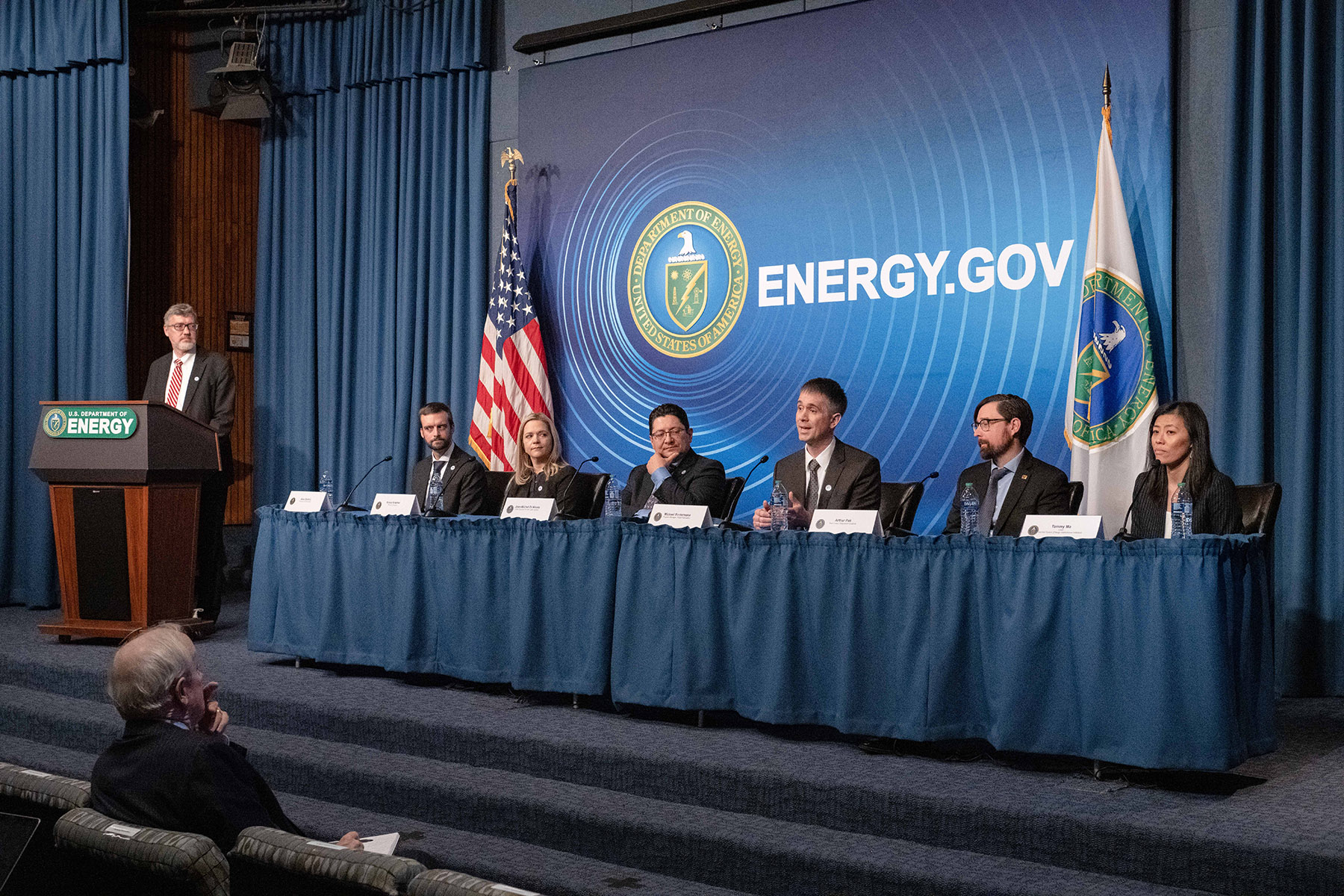An Incubator for Talent
In the early days of laser-driven fusion research, the field was both specialized and competitive. By the late 1990s, as the community prepared for the construction of the NIF, and LLNL decommissioned its earlier lasers, the OMEGA-60 facility at LLE had evolved into a uniquely flexible and powerful platform. This transition sparked a 25-year collaboration between LLE and LLNL, focused on high-energy-density physics (HEDP) and, crucially, on training future scientific leaders.
Concurrent with the HEDP studies was an effort by LLE to develop techniques and diagnostics that contributed to the 2022 achievement of fusion ignition. LLE scientists were stationed at Livermore for extended periods, and LLNL scientists worked on experimental campaigns at LLE. During this period, novel diagnostics were developed that provided the foundation for solving complex science issues on the NIF. Each effort provided a method, proven on Omega, to achieve measurements critical to understanding and improving the performance of NIF implosions. The groups responsible for these developments were comprised of senior scientists plus young researchers and graduate students. This intense experience was formative and a path to significant career advancement. Early-career researchers from LLNL have also led many laboratory basic science (LBS) experiments and collaborated with university researchers on their National Laser Users’ Facility (NLUF) projects for fundamental HED science on the Omega Laser Facility.
Building Foundations for Ignition
Long before NIF’s first full-power shots in 2010, LLE and LLNL scientists were laying the foundations for ignition, both in terms of technical capabilities and scientific expertise. From the late 1990s through the 2000s, Omega served not only as a testbed for experimental techniques but also as a training ground for the people who would one day lead NIF’s most critical campaigns. Over this decade, tightly knit teams of experimentalists, diagnosticians, theorists, and modelers—many of them early in their careers—worked side by side on a relentless schedule of experiments. They refined diagnostics, perfected target designs, and pushed modeling capabilities, all while learning to operate in the uniquely demanding environment of large-scale HED experiments, where precision, speed, and teamwork were paramount. These experiences prepared a community of scientists to tackle the challenges that NIF would bring on the journey to ignition.
When NIF’s lasers first came online, these researchers were more than technically ready—they had years of shared problem solving behind them, having served as principal investigators and coprincipal investigators on Omega campaigns. The result was a cadre of scientists—including Tammy Ma, Art Pak, Annie Kritcher, Alex Zylstra, along with other future ignition leaders—all poised to tackle NIF’s grand challenge. The years of preparation proved decisive. When the NIF team achieved fusion ignition in December 2022, many of the experiment’s architects (pictured at the press conference on page 18) could trace their careers back to their early years on Omega, thus bringing the achievement full circle. In total, the panelists participated in 1342 shots at LLE.
The 2022 ignition shot was not just the culmination of decades of pioneering advanced laser physics; it was a testament to a workforce pipeline that had been deliberately cultivated through sustained collaboration between LLE and the broader community. With further LLE–LLNL collaboration and the continued pipeline of scientists trained at LLE, NIF is now repeating fusion ignition at higher yields and greater target gain. The ignition experiment at the NIF in April 2025 set a record fusion yield of 8.6 MJ with a target gain >4.
What originally began as a partnership between a handful of LLE scientists and LLNL soon blossomed into a broad and enduring collaboration, with LLNL scientists taking on roles at LLE and the University of Rochester, over time expanding the mentoring network and supporting a growing cohort of early career scientists and student researchers. Today, LLE supports over 80 graduate student researchers throughout the community, offering them unparalleled access to world-class facilities and expertise—a veritable national laboratory experience at a university.





